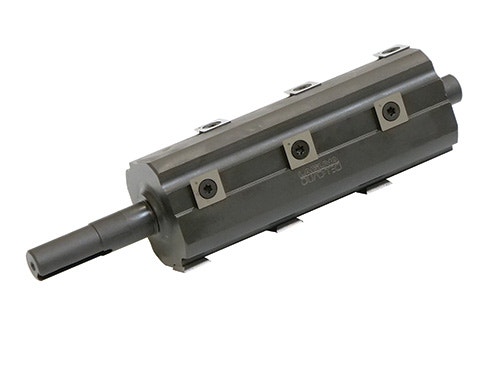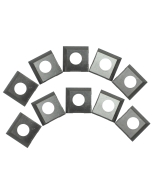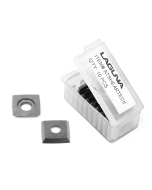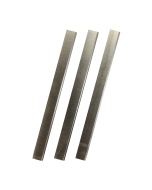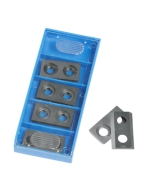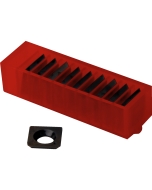Planer and Jointer Cutterheads and Safety
Cutterheads with carbide inserts is a relatively new technology for home-shop jointers and planers. It improves cutting quality on tricky grain, reduces noise and eases routine maintenance.
Until relatively recently, the only type of cutterhead in both jointers and planers held long, high-speed steel blades. They did a good job of cutting smoothly and retaining a sharp edge, but they added a significant amount of noise during operation. They also would occasionally tear out exceptionally curly or twisted grain fibers. Straightknife cutterheads, which are still available on many models, can also be a bit tricky to sharpen and install with perfect alignment.
A major improvement in cutterhead style occurred when helical heads came to market. They feature insert tooling, with many small square pieces of carbide, strategically mounted to the cutterhead, held in place with set screws. The inserts usually have four sharp edges; if one edge nicks or dulls, you can simply unscrew it an rotate it to a new sharp edge quickly and easily.
Helical cutterheads have three main advantages: they are quieter when cutting, they reduce tearout by cutting typically at a shear angle instead of straight across, and they simplify the process of keeping the cutterhead sharp — no knives to change.
While this technology was a real breakthrough, the cutterheads are more complex to manufacture, which makes them more expensive than conventional knife-style heads. The good news is that some companies have been experimenting with the geometry of these cutterheads, regarding where the carbide inserts are located and how many inserts are required. These newest cutterheads have some of the advantages of helix cutterheads. and the insert tooling, but they are less expensive to make.
Keep Safety in Mind
All power tools, especially those that cut wood, can cause bodily harm. That is true of both planers and jointers, especially the jointer. Because the jointer's cutterhead rotates toward the user and is easily exposed, it has the potential to pull fingers into it. Following proper safety techniques, including keeping the retractable guard in place whenever possible, is essential. Planers are a bit less dangerous in my opinion, but they can still pull hands into harm's way. They also can eject short boards that get caught in the cutterhead back out toward the operator at great force. Use both machines carefully.
Golden Age of Options
We are living in the golden age of jointers and planers for home shops, when it comes to options and performance. While investing in one of each of these machines isn't cheap, there are affordable options that can take your stock preparation capabilities to the next level.
Keep the inspiration coming!
Subscribe to our newsletter for more woodworking tips and tricks
